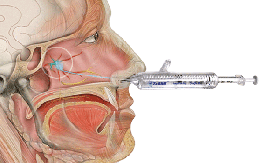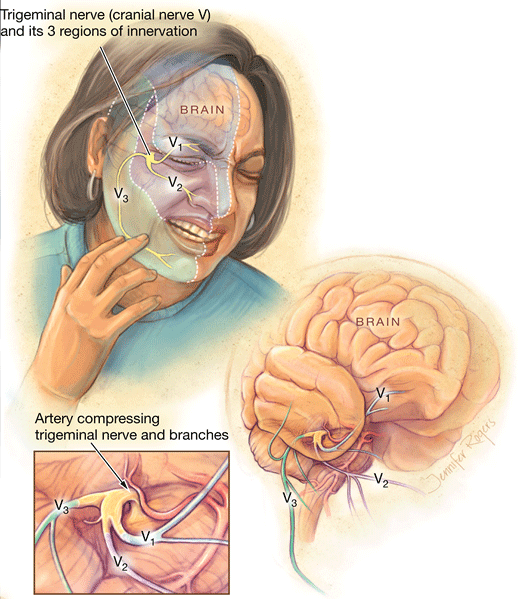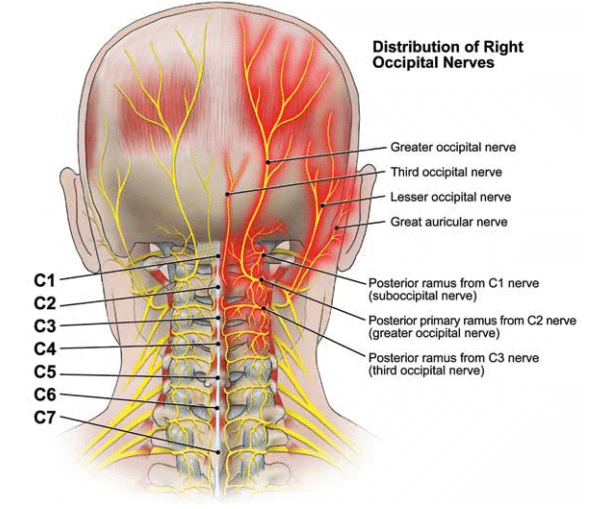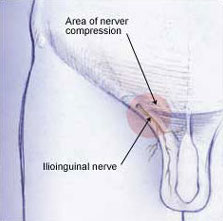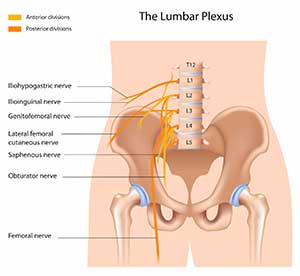Peripheral neuralgia
What is a peripheral neuralgia?
The peripheral nervous system is a complex collection of nerve fibres that are present outside the central nervous system i.e. the brain and spinal-cord. They are involved in carrying sensations such as light touch, hot and cold and pain and are responsible for maintaining functions such as bladder control, bowel control and blood pressure. In peripheral neuralgia, damage to these peripheral nerves can occur resulting in pain and other symptoms. The pain can occur in the absence of any form of nerve stimulation, though is often precipitated by some form of injury or disease.
Sites affected and symptoms
Peripheral neuralgia can affect a number of different sites. Below are some of the common sites affected and the clinical symptoms accompanying them.
Trigeminal neuralgia
The trigeminal nerve is a nerve that arises from the brain, passing through the skull and ultimately supplying the face. Sometimes, the trigeminal nerve can get affected by some form of inflammation resulting in significant pain along its distribution. This is known as trigeminal neuralgia. Patients experience pain along one aspect of the face which can include the cheek, the jaw and sometimes even the eyes.
Occipital neuralgia
This condition affects occipital nerves which are run along the back of the head (in particular C2 and C3). It is caused by inflammation and the symptoms that patients experience include severe pain that may be either sharp or shock-like. The site affected is the back of the head and the neck. Occasionally, the patients may have a painful scalp and may experience pain when they are moving the neck.
Ilioinguinal neuralgia
This form of peripheral neuralgia results in pain within the abdomen. A potential cause is having undergone abdominal surgery or direct trauma to the nerve. Patients typically experience a burning pain with associated numbness (sometimes) along the lower abdomen. This pain can radiate to the inner aspect of the thigh and can include the genital area as well.
Iliohypogastric neuralgia
The iliohypogastric nerve is another nerve that is present within the abdomen that has a complex course through the body. Damage to this nerve from surgery or from direct trauma can result in neuralgia. Patients complain of a burning abdominal pain immediately following trauma. This pain can radiate to the area just above the genitals (called the suprapubic region) and occasionally the genitalia as well.
Treatment of peripheral neuralgia
The treatment of this condition depends upon the cause.
- Membrane stabilizing pain medications. These include anticonvulsant medications such as Pregabalin and Gabapentin. These medications slow down the conduction of pain impulses along the nerve fibers through various mechanisms.
- Local anesthetic patches. The use of local anesthetic patches (for example 5% lidocaine) can be a useful adjunct to treatment in different kinds of neuralgia.
- Anti-depressant medication. Antidepressants have powerful analgesic properties and tricyclic antidepressant agents such as amitriptyline are useful in controlling peripheral neuralgia induced pain.
- Nerve blocks. In conditions such as Trigeminal neuralgia, nerve blocks may be conducted where local anesthetic (Lidocaine) and steroid is injected around the nerve fibers as it passes through a canal. This can effectively reduce pain.
- Cryoablation. This involves the application of extreme cold to the nerve fibers that destroys the nerve fibers completely. This will effectively help reduce pain due to neuralgia.


